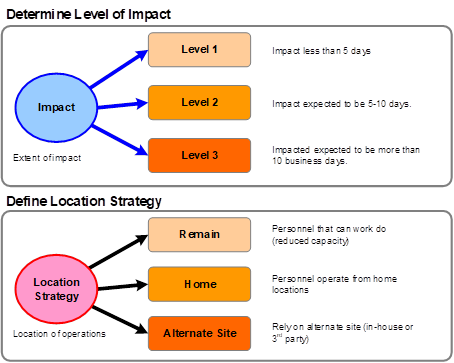Business continuity and disaster recovery (BC/DR) – a.k.a., contingency planning, business continuity management, and business recovery planning – can weigh on CC leaders’ minds. All too often, developing plans and putting resources in place doesn’t make it to the top of the “to do” list or score a “win” in the battle of the budget. It’s like an insurance policy people don’t get around to buying and then really wish they had when a big bad event occurs.
I’ve been waving the warning flags on this issue for years. With today’s headlines regarding the novel coronavirus, I can’t help but wave my arms all the more furiously. Global pandemics do not simply affect people and disrupt commerce “over there.” The ripple effect shows up on our doorsteps, and we need to be ready for them.
The goals of any BC/DR plan should include:
- Minimizing the chance of disruption caused by unexpected events
- Continuing operations when such events occur
- Recovering operations after catastrophic events
The plan must take into account people, technology, facilities, and processes. Most IT Departments have already put themselves through the paces of considering the “what if” scenarios that address network outages, system failures, power outages, etc. (although it wouldn’t hurt to have a chat with them to make sure you’re covered!) If you’ve been migrating to cloud solutions, you may have some “built-in” resiliency and location agility, courtesy of your vendor. But the contact center needs to have its own plans to address other circumstances – e.g., problems with the building, natural disasters or storms, security-related lockdowns, or, heaven forbid, a significant percentage of staff infected with a highly contagious disease or afraid to come to work for fear of exposure.
A good BC/DR plan has these characteristics:
- Fully describes the goals, team, roles, and processes for various scenarios
- Includes details such as contact information, checklists, communications plans
- Covers not just what to do when events occur, but what to do to move back to normal operations
- Includes processes for testing and updating/maintaining the plan

There has never been a better time to develop (or update) plans, or get senior management’s support for doing so. Let’s put some urgency behind this task!
If you’re not sure how to get started or don’t have enough resources, we can help! Start by downloading our BC/DR planning document and gathering your management team to review it. This planning guide covers:
- Principles and Best Practices
- Options to Enhance Continuity and Recovery
- Objectives of a BC/DR plan
- Keys to Success
- Sample BC/DR Plan Table of Contents
Then get to work on your BC/DR vision and securing the executive sponsorship to help you bring it to fruition. You’ll also want to identify the core team – within the CC, the company, and vendors – that will do the legwork for the plan, make the key decisions, and proceed with implementation. Perhaps most importantly, commit to getting it done despite the myriad of other priorities that scream for your attention. A solid plan will help you avoid a truly catastrophic result when what used to seem unimaginable occurs.
